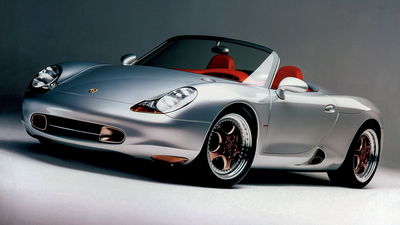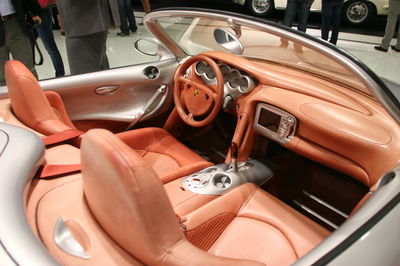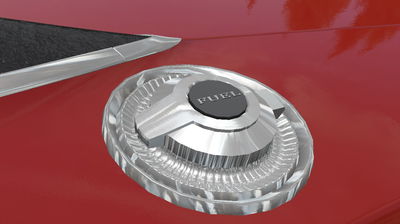Survival - Porsche Boxster Concept
Back in the 70s, 80s and earlier 90s, Porsche was mostly focusing on making front-engined coupes with excellent handling. Not the 911 though.

Back in the 70s, 80s and earlier 90s, Porsche was mostly focusing on making front-engined coupes with excellent handling. Not the 911 though.
Porsche had tough times with its competitors resulting in serious problems. Porsche’s survival plan was to start focusing on making more rear engined cars. Under the new head of Porsche design, Harm Lagaay and the studio boss Pinky Lai, they were going to build a mid-engined, convertible concept to be shown at the 1993 Detroit auto show, resulting in the model going to the production line some years later. It was called the Boxster, because of the boxer engine configurations Porsche was and still is famous for. The exterior was designed by Grant Larson, he worked to create a design that would look familiar to the 550 Spyder, the “eyes” were in the Boxster’s headlamps like the production model, but still managed to be a more refined version of its predecessor’s. The concept’s surfacing appeared very simple, for example the long sloping rear deck with the small LED taillights.

Stefan Stark designed the interior, it included both retro and new style. The gauge pack was a of course Porsche’s classic five-hole set of instruments, the rev counter was located at the centre rather than being located on the gauges. The markings were on the glass that covered them.
It had an LCD display for the navigation system and phone system. The whole centre tunnel was made from aluminium, punctured by the manual gearstick with visible mechanism, and a pair of unique propeller-style air vents matching those in the door cards. The brown/red-ish leather was inspired by the seats in the 1960 Porsche RS60 racer, as well as key switches.
Porsche was then announced that it would go in production by the year 1996. In combination with a refinement of its manufacturing process helped by Toyota, which reduced the time it took to build a car. the Boxster was surprisingly affordable, which meant it would become a top seller, until the Cayenne, Panamera and Macan came along to lead Porsche to the success it has today.

Porsche’s manufacturing process was a complete mess according to an article back then, and the engineers would have to look through many different part bins and climb ladders to search shelves just for building a single car. But because of Toyota, Porsche said it had reduced the assembly time for one car from 120 hours to 72, and the number of errors per car had been going down with 50 percent. Porsche received many suggestions from Toyota, giving even more advantages.
Hope you enjoyed this short blog! Any type of criticism is allowed, and let me know if you’ve found some typos.
#blogpost













Comments
Did the 987 Boxster share any parts with the outgoing SW20 from 1996-98 and or with the new ZZW30?
Not as far as I know, Toyota just came up with suggestions and helped with the manufacturing. Those may seem identical but have quite alot of differences.
Pretty interesting m8
Thank you.
Excellent work!
Wait….Gary? Is that you?
That was quick, the article was released 16 minutes ago and it’s already editor’s pick
Thank you :)
Sounds like we need to trow you a party, congrats!
Nice job on the Editor’s Pick, m89
Thanks!!!
I just wish that those headlights were changed before it was produced
Nice job dude!
Thank you!
Nice work
Ayy thanks!
Good job! I enjoyed that!
Thanks!
Nice blog post man
Well done with the editors pick mate!
Pagination